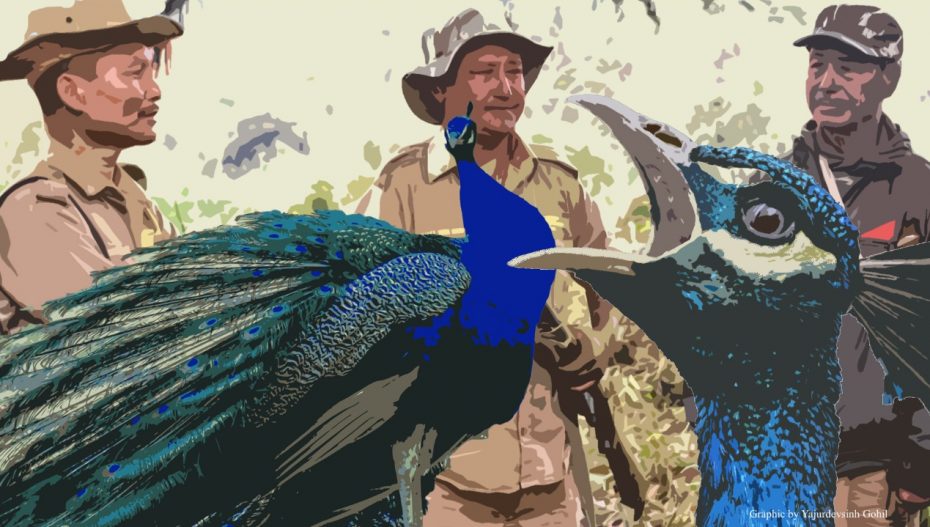Peacocks are not only the national bird of India; they also hold great religious and historical significance. However, the recent discovery of disturbing cruelty against the birds have led many people to question if Indians and the government really care about this symbol of national pride.
Incidents such as the one that occurred in Dharampur, Gujarat, on July 14, 2021, when three poachers were caught trying to hunt peacocks, and employees of the forest department had to fire bullets in self-defence, have been occurring at a disturbingly high frequency over the past decade. In 2020 alone, nearly 5.5 crore peacock tail feathers were smuggled to China by a firm named Galaxy Rider.
A great number of such cases are thought to fly under the radar. To learn more about the scale of the crisis, Team VoI spoke to a forest official in Gujarat, who answered questions under the condition of anonymity. According to the official, as a ‘Schedule-1 Species’, peacocks enjoy the highest level of legal protection provided to any bird or animal. “However, despite being protected, peacock feathers are a valued commodity in India, for use in religious ceremonies, decorations and even some forms of jewellery,” the official explains.
He adds, “The most popular use of peacock feathers is as brooms to sweep temples and other sacred places. As a result, illegal trade is thought to be booming. While this means that the trade of plucked peacock feathers or peacock meat is entirely prohibited and classified as a punishable offence, this criminalisation only applies to the sale of plucked feathers, while the sale of shed feathers is entirely legal.”
Experts associated with the Oxford Martin Programme on Wildlife Trade state that it is difficult to determine whether the sale occurring is that of shed feathers or plucked feathers, since the only method to determine whether a feather is plucked or shed, is to examine its base for minor lacerations and deformities. Poachers overcome this problem by trimming the base, effectively making it impossible to identify the feather’s origin.
The forest official that VoI spoke to also revealed that the demand for peacock feathers has led poverty-stricken farmers to begin poisoning water sources to collect the feathers and sell them.
VoI also spoke to a reformed former hunter who now follows a vegan lifestyle, to learn more about the methods poachers use to collect feathers. He says, “Peacocks are notoriously skittish birds, prone to high levels of stress and fear, which means that even a small amount of physical injury can cause them to suffer panic attacks and die.”
The hunter adds, “A number of poachers try to pluck feathers from the tails of a living peacock, and when done roughly or violently, this can cause excruciating pain to a peacock. The pain caused by this violent encounter usually causes the bird to die of shock.”












